Develop Game-Breaking Speed With Resisted Speed Training
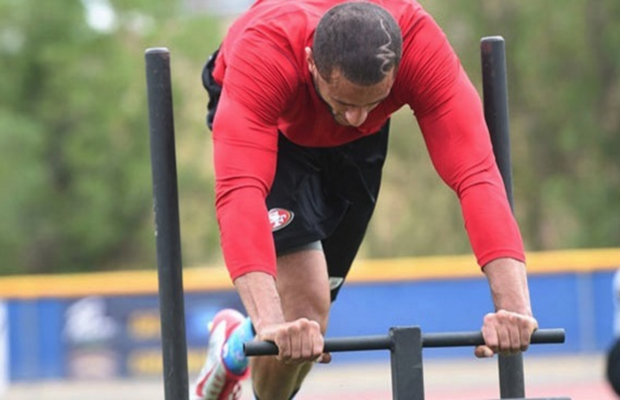
Developing speed involves more than running sprints on your local field. You need to take a systematic approach to both acceleration and top-end speed. Here’s the approach I’ve found effective with my athletes.
Building Acceleration
Resisted Speed Training
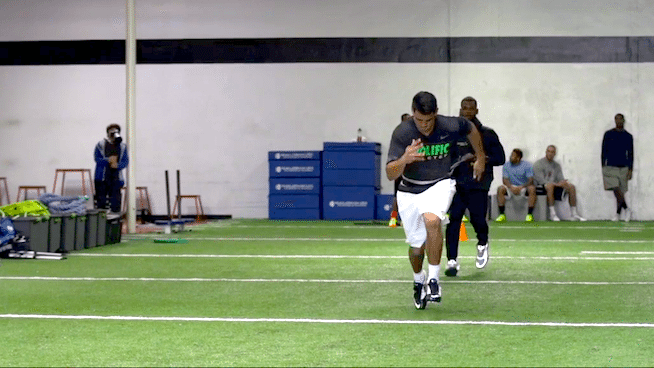
Resistance Running Drills
Acceleration is arguably the most important aspect of speed. You accelerate from a stop or from a cut more often than you reach your top-end speed.
Link to original article in Stack.com.
Resisted speed training is a great way to improve acceleration, because it teaches the proper forward body angle needed to drive your feet backward into the ground, and it also improves stride power. Below are three of my favorite resisted speed training drills, which, when done properly, reinforce acceleration mechanics and help you burst off the line faster than before.
Hill Sprinting
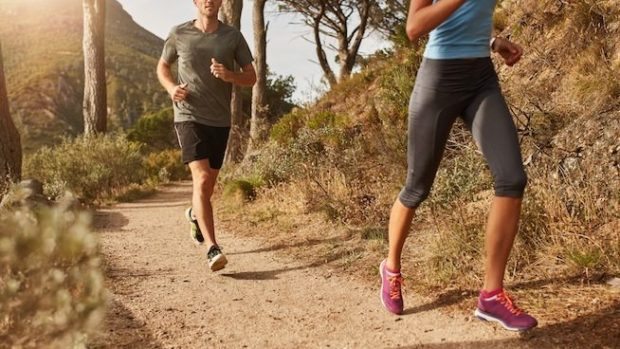
Trail running on a mountain path
Ideally performed on a slight incline, hill sprinting should be considered an essential component of beginning sprint work. Although it’s not technically resisted, the incline serves as an introduction to resisted training and offers similar benefits. It limits the speed you can reach, allowing for greater focus on mechanics, including forward lean, the short stride length necessary for acceleration, and longer ground contact time, which equate to greater acceleration speed.
Sled Towing
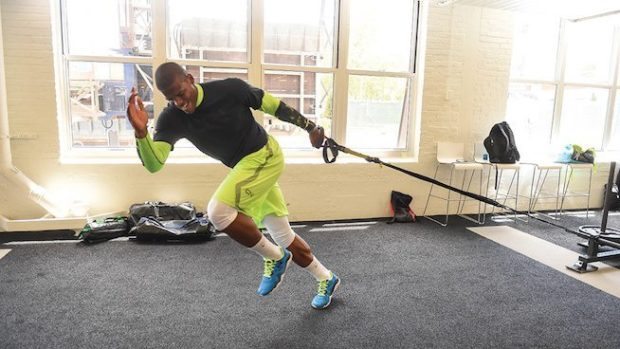
Cam Newton Sled Pull
Sprinting is made up of vertical and horizontal force. Sled towing is an excellent way to train horizontal force production. It allows you to feel the forward lean position your body will ideally be in during the drive phase of sprinting. While you’re towing, wearing the harness also forces you to keep a tight back, since rounding the back is an awkward position to run in while pulling a weighted sled. This is best done after hill training is complete.
Sled towing is ideally completed at a peak distance between 25 and 30 meters. This is longer than you would sprint uphill, or that you would push a prowler, reinforcing the idea that it is a great way to transition an athlete to flat ground. The weight on the sled should allow you to perform the drill with proper sprint mechanics—optimally, no more than 15 percent of your body weight.
Prowler Push Training
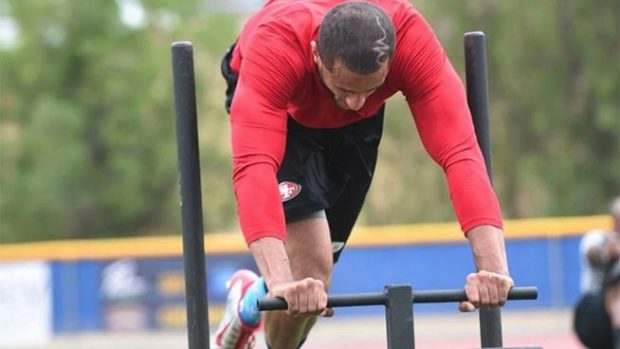
Kaepernick Prowler Push
If you lack access to a hill, a prowler sled is an excellent replacement. The prowler doesn’t permit as much technique work in upper-body mechanics (your arms cannot swing as they normally would during a sprint), but it does allow you to feel a nice forward lean, and it forces you drive forcefully down into the ground with shorter steps.
As with the hills, you will not achieve maximal velocity. But if you use the prowler with hill sprints, the prowler is an excellent way to transition to flat ground sprinting. It may also be introduced in the early training blocks at the same time as hill sprints.
Developing Top-End Speed
Acceleration is a major focus, but top-end speed is still important for athletic development. Sprints are important, but other drills allow you to reach your top speed and improve technique at high velocity.
Acceleration Holds
With this exercise, you learn how to move fast while extending the zone through which you can keep accelerating, and hit higher velocities. As your training progresses, the distance of the acceleration hold should grow, to encourage the highest speeds attainable. Work on a starting distance of 25-30 meters and extend the zone 5-10 meters at a time.
Coaching Points:
- Quickly build up at the start, trying to reach maximum speed—but if you don’t quite hit it during your first few workouts, it’s OK.
- Hold the speed gained through the hold zone, which also marks the finish (typically 10 meters, but can be extended as training progresses).
- Rest for 2-3 minutes between sets so fatigue doesn’t limit your speed and power.
Fly-Float-Fly
Fly-Float-Flys, or “in-and-outs,” should be incorporated into the later phases of training (this exercise is the next step after the acceleration hold), because of the higher velocities that will be reached. Place markers at distances of 20 meters, 30 meters, 40 meters, etc. Each “Fly” or “in” portion should be worked at top speed, and “shift” to a higher speed at each “fly” marker.
Tip: don’t make the speed hold zones too long, or fatigue or deceleration may occur.
Coaching Points:
- Accelerate rapidly to the first marker. Try to get as close to maximum speed as possible.
- Hold the speed until the next marker.
- At the next marker, accelerate again to a higher speed.
- Hold the speed until the next marker or finish.
Acceleration Build-Ups
This is another excellent drill for progressing toward top speed. Acceleration build-ups do not focus on the acceleration phase as much, but they do teach you to work up to top speed comfortably.
Coaching Points:
- Accelerate slowly and comfortably.
- Focus on mechanics.
- Reach a top speed in a comfortable manner.
Single-Leg Turnovers
The final exercise is a Single-Leg Turnover onto a soft elevated surface. Stand on the leg with which you will do the turnover, jump up, and cycle the leg through as you would while running. The elevated surface forces you to have leg rapid turnover to land properly. Progress by slightly raising the elevated surface over time (a half or 1 inch at a time). Start by performing 2-3 reps per leg for 2-3 sets.
Coaching Points:
- Move through a full range of motion
- Use natural running stride mechanics
By Patrick Mendez – Patrick Mendez is the head strength and conditioning coach and personal trainer at Lanco Fieldhouse (East Petersburg, Penn.) He holds the following certifications: ISSA Personal Trainer; NCCPT Personal Trainer; IYCA-High School Strength and Conditioning Coach; NSCA Strength and Conditioning Specialist; NESTA SAQ (Speed, Agility and Quickness); NASM Sports Nutrition Specialist; and Women’s Fitness Specialist. Mendez has trained athletes and general fitness clients for the past seven years. He has helped over 50 high school athletes get offered more than 270 scholarships to play D-I athletics.
Read the original article in Stack.com